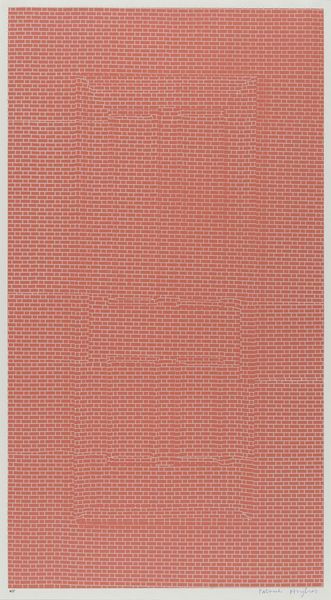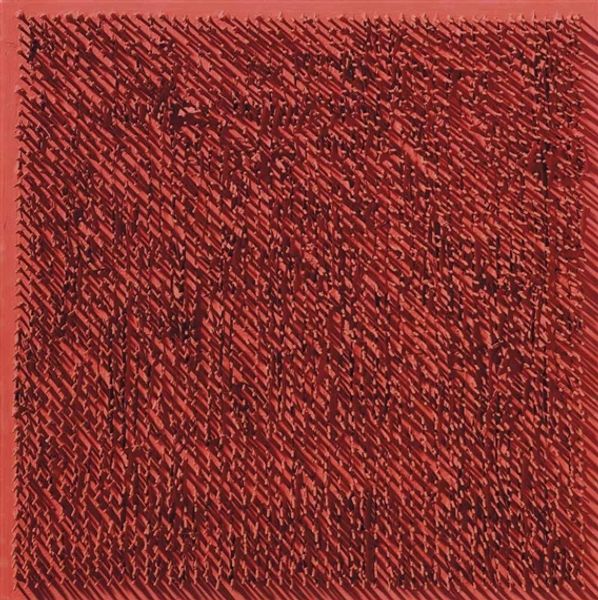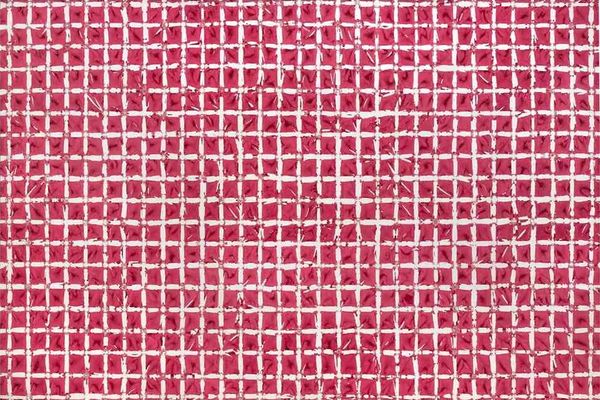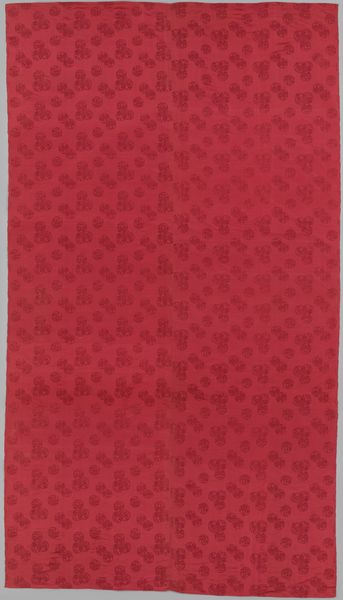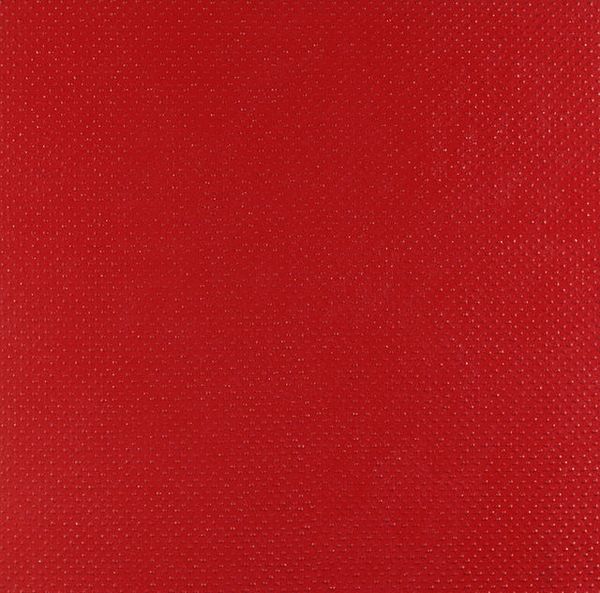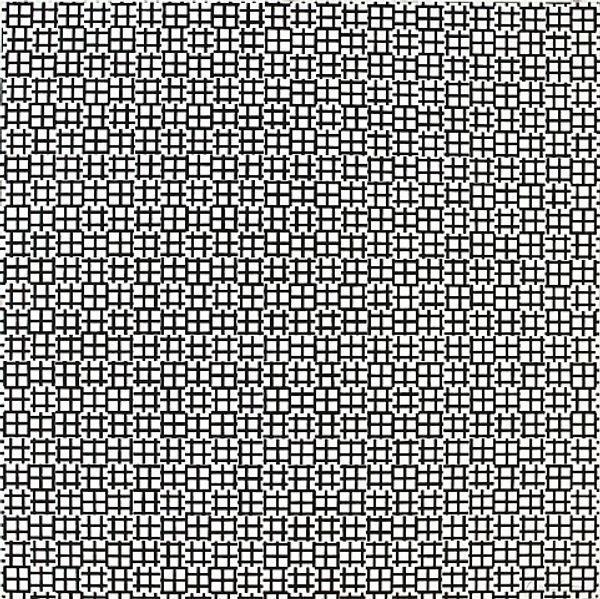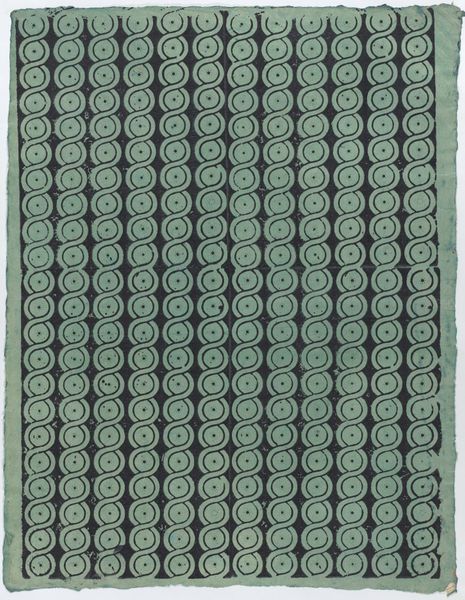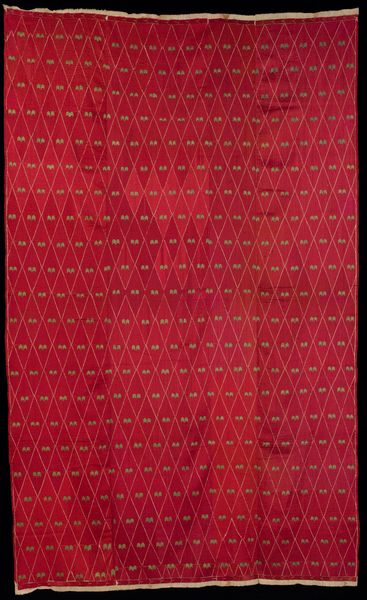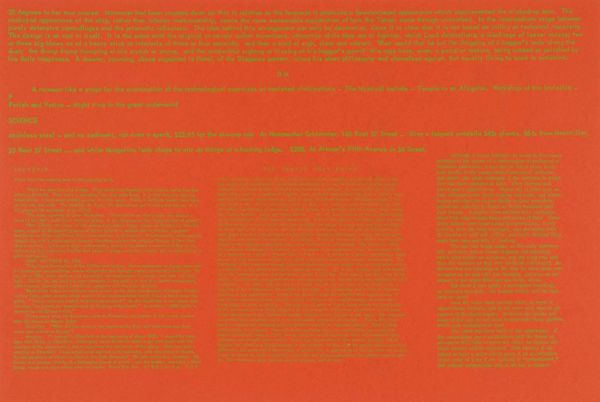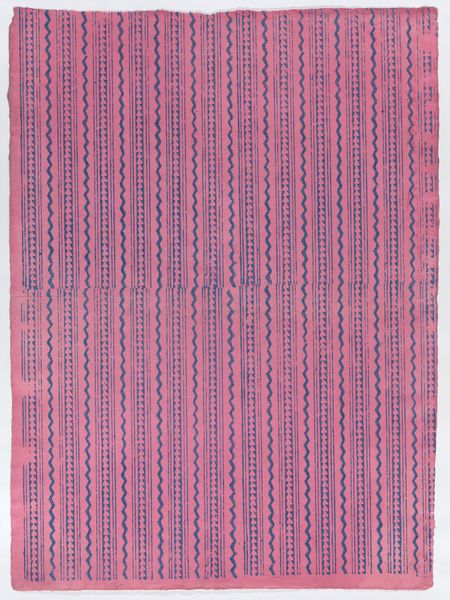
pattern design
organic pattern
repetition of pattern
vertical pattern
regular pattern
pattern repetition
textile design
imprinted textile
layered pattern
combined pattern
Copyright: Bernard Aubertin,Fair Use
Editor: This is Bernard Aubertin's "Clous 66 No 75," created in 1966. The patterns create a striking visual effect. What social or artistic movements might have influenced Aubertin’s work? Curator: The socio-political climate of the 1960s played a crucial role. Post-war, there was a societal hunger for a new aesthetic language. The seriality and the almost mechanical repetition are significant. Aubertin was part of the ZERO movement, weren’t they? Their emphasis was on reduction and the exploration of monochrome... a kind of tabula rasa, perhaps? How do you think that ties into the context of the Cold War anxieties and the burgeoning consumer culture? Editor: So the regularity could be read as both a reflection of and a resistance against the standardization of life at the time? I also find the scale quite interesting. Was this a deliberate effort to confront or perhaps engage with the evolving perceptions of art, its accessibility, or its relevance to the broader populace? Curator: Exactly! Scale plays a critical part in its public reception. Did the use of often industrial materials or techniques, challenge traditional art values? Think about how accessible or challenging that might have been to audiences accustomed to a more conventionally “artistic” appearance. How do you think museums, at that time, handled work that questioned those values? Editor: That's really fascinating; considering the social impact, it changes my whole perspective. I initially just saw a pattern, but there's so much more. Curator: Precisely! It prompts us to see art not as isolated creations but as active participants in cultural dialogues. Looking at art this way makes you consider the artist as someone consciously questioning his socio-political landscape through form and material. I will surely revisit his works after our discussion.
Comments
No comments
Be the first to comment and join the conversation on the ultimate creative platform.
